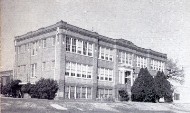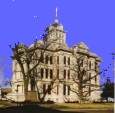Milam County Historical Commission
Milam County, Texas
All credit for these articles go to
Susie Sansom-Piper and
the Rockdale Reporter
Milam County, Texas
All credit for these articles go to
Susie Sansom-Piper and
the Rockdale Reporter






Black History month articles
Written by Susie Sansom-Piper and
published in the Rockdale Reporter
Written by Susie Sansom-Piper and
published in the Rockdale Reporter
ON THE OTHER SIDE OF THE TRACKS, SERIES 9, PART 1
Editor’s note: This is the first article in the ninth series of “On the Other Side of the Tracks,” a Black
History Month series by former Rockdale resident, and longtime teacher, Susie Sansom-Piper.
Hard Work, Education and Church
By SUSIE SANSOM-PIPER
Rockdale Reporter - 2016-02-04
These are memories and recollections given to me by my parents, my experiences, and
information from many of the now deceased older people.
This series will contain a partial review of previous episodes, some occurring more than
fifty years ago.
This also portrays events leading to the finality of living on “the other side of the
tracks”, to September 1966, when life began “On Both Sides of the Tracks.”
It all began before Rockdale was incorporated as a town. The merchants of this little
hamlet recruited Paul Moultry, who was a freed slave and had settled in Georgetown, to
move here and become blacksmith for the many farmers in this area.
It has often been said that although he was a teenager, he had earned the reputation of
shoeing the horse of outlaw Sam Bass. Soon, Jack Shields, another Blacksmith settled in
Rockdale.
Both blacksmiths had large families. Paul’s four sons followed the blacksmith trade also.
Their daughters were among the first to produce teachers in surrounding local schools.
As other blacks began settling in Rockdale, many worked in the coal mines, and as day
laborers, and farmers.
They settled in all areas of town, but most of them lived in the flats, and you had to
cross “the other side of the Missouri - Pacific Railroad tracks” to get to their homes.
During these early years, there were no lights, no dirt roads, no sewage, and very few
had access to a car.
WORLD WAR I — Early service men were segregated according to race, and had no choice of
services.
Two of the Moultry Brothers served in the Army Band and shod horses in France.
They often told of their plight. They said: “We had just returned from France, but they
made us stay on the boat when we reached New York City. It wasn’t too bad, except we just
got tired of eating “Hard tack bread.”
After finally returning to Texas, the first jazz band consisting of four Fannin Brothers,
two Shield Brothers and four Fannin Brothers formed a 10 piece jazz band.
They mostly performed for white clientele, county fairs, and Juneteenth celebrations.
During the late ’30s, Pee Wee Crayton became a recording blues artist. The Crayton
Brothers, Percy, Quincy, and Tommy were a popular string trio, and George Richards was a
pianist.
These gentlemen often played for home entertainment suppers, and Willie James Cooper was
a favorite vocalist.
‘SEED PLOT’ — During those early years, education for Blacks in Rockdale began at the
Rockdale Colored School with its foundation in 1902. First principal there was Professor
S.S. Adams, followed by Bryant Yearling Aycock.
Professor Aycock taught from 1903 to 1921, after failing health forced his retirement.
The school was later named for him.
After his retirement, Mrs. M. C. Allen assumed leadership of the Aycock High school. She
was the wife of Rockdale’s first Black medical doctor, Dr. W. A. Allen, and she served
until 1924, when leadership passed to Professor D.S. Shanks.
Prof. Shanks decided he wanted to encourage and invigorate education in the Black
community in the Rockdale area, so he formed what would be the “seed plot” for Aycock’s
future great alumni.
He established the first kindergarten class at Aycock. It was unlicensed, unfunded, and
unapproved by the state laws.
He selected five five-year-old children, four girls and one boy, and taught them in his
high school classroom, giving them a jump start on their education.
These five children were Allie Mae Bacy, Selma Lee Cook, Willie Edgar Kendle, Susie E.
Moultry (Piper), and Vivian Ray Williams.
This educational venture inspired community pride and deepened its awareness as an
important factor in Rockdale’s burgeoning growth.
OLD TIMES — Community awareness, however, was a great part of life during these times.
Automobiles were as scarce as hen’s teeth, so you either walked, rode in a buggy or
wagon, but you survived.
There were no special fans, air conditioners, etc., and people often slept outside on a
pallet on the porch, or an old iron cot padded down for comfort.
The music people traveled, performed and were always a producing aggregation. Religious
activities were a must.
There were often Sundays when services lasted until nine and ten P.M. Everyone helped one
another, beginning with childhood correction by your neighbor, the sharing of hog-killing
time, or your over-productive garden, and the services of the local mid-wife (often
without pay).
PARKS — Tributes were set up as tributes to these people of the 30’s:
• Julius Moultry Park – Baxter Street.
• The Blacksmith Trip Hammer, In Memory of Julius Moultry, Rockdale Museum.
• Sumuel Park, MLK and Fifth Street, contributed by ancestors of the late Jack Shields.
.

Moultry Blacksmith Shop was a landmark fixture of life in early Rockdale.